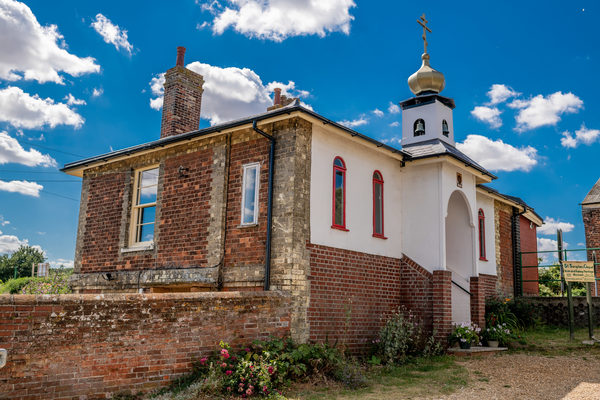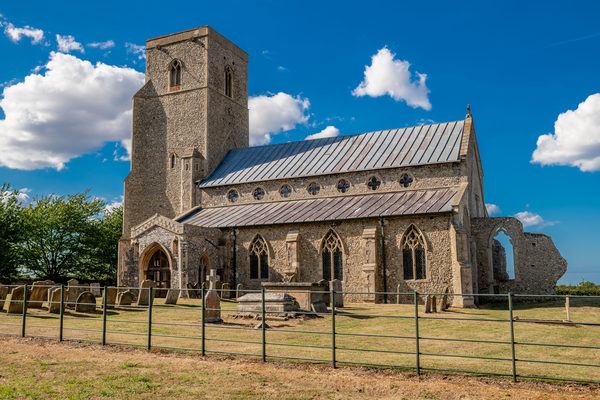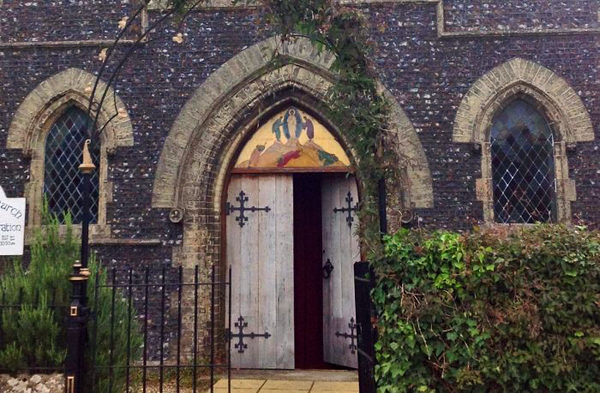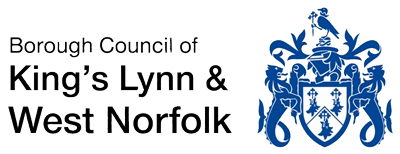The Shrine of Our Lady at Walsingham was established in 1061 when, according to the text of the Pynson Ballad (c 1485), Richeldis de Faverches prayed that she might undertake some special work in honour of Our Lady. In answer to her prayer, the Virgin Mary led her in spirit to Nazareth, showed her the house where the Annunciation occurred, and asked her to build a replica in Walsingham to serve as a perpetual memorial of the Annunciation.
This Holy House was built and a religious community took charge of the foundation. Although there is very little historical material from this period, it is known that with papal approval the Augustinian Canons built a Priory (c 1150). Walsingham became one of the greatest Shrines in Medieval Christendom.
The suppression of the monasteries was part of the English Reformation. The suppression of the Walsingham priory came late in 1538, under the supervision of Sir Roger Townshend, a local landowner. Walsingham was famous and its fall symbolic. The buildings were looted and largely destroyed, but the memory of it was less easy to eradicate.
In the Reformation caused the Priory property to be handed over to the King's Commissioners and the famous statue of Our Lady of Walsingham was taken to London and burnt. Nothing remains today of the original shrine, but its site is marked on the lawn in "The Abbey Grounds" in the village.
After the destruction of the Shrine, Walsingham ceased to be a place of pilgrimage. Devotion was necessarily in secret until after Catholic Emancipation (1829) when public expressions of faith were allowed.
In 1896 Charlotte Pearson Boyd purchased the 14th century Slipper Chapel, the last of the wayside chapels route to Walsingham, and restored it for Catholic use.
In 1897 by rescript of Pope Leo XIII, the sanctuary of Our Lady of Walsingham was restored with the building of a Holy House as the Lady Chapel of the Catholic Church of the Annunciation, King's Lynn.
The Guild of Our Lady of Ransom, brought the first public pilgrimage to Walsingham on 20th August 1897. Visits to the Slipper Chapel became more frequent, and as the years passed devotion and the number of pilgrimages increased.
On 19th August 1934, Cardinal Bourne and Bishop Lawrence Youens led the Bishops of England and Wales, together with 10,000 pilgrims to the Slipper Chapel. At this pilgrimage, the Slipper Chapel was declared to be the National Shrine of Our Lady for Roman Catholics in England.
During the war times Walsingham was a restricted zone and closed to visitors, but many service men and women showed interest in the Shrine. On May 17th 1945, the American Forces organised the first Mass in the Priory grounds since the Reformation.
The Shrine now attracts some 150,000 pilgrims during the pilgrimage season with about 35 Major Pilgrimages from Catholic, Diocesan or Ethnic groups and Catholic Societies or Associations as well as many Parish and Overseas groups. At present our largest Pilgrimages are those of the Tamil community who come each May (c.6,000) and again in July with about 15,000 pilgrims, some being Christian and some Hindu in faith. The Syro-Malabar community bring about 5,000 pilgrims on their National Pilgrimage in July.








